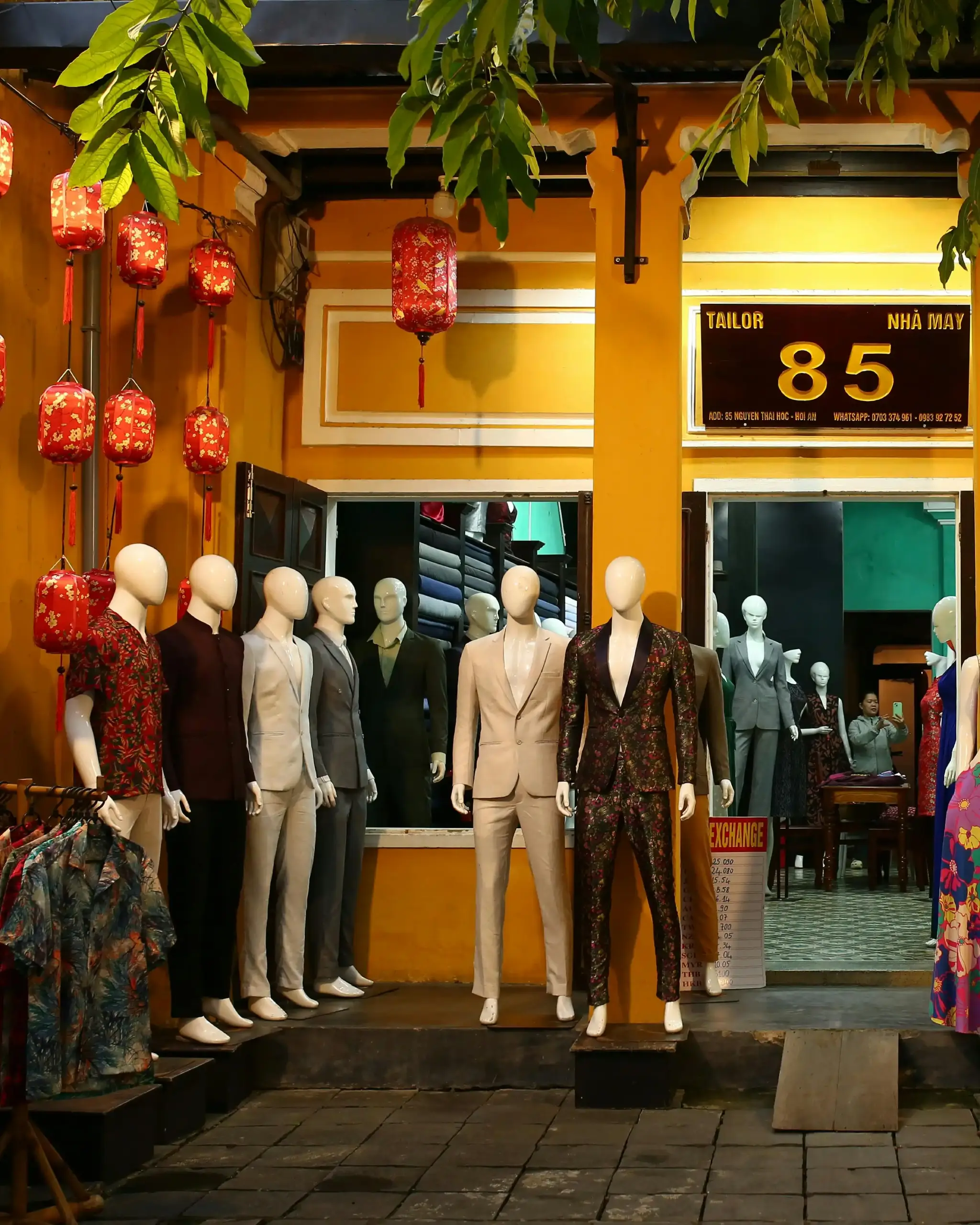Streetside Sartorial Style, As Stitched By Tailors
These streets and places within Southeast Asia are lined with shops whose tailoring expertise spans generations

Where can you find tailors on the streets of Southeast Asia?
Long before global fashion chains took over cities worldwide, streetside tailors were the heart of Southeast Asian sartorial culture. From narrow alleys to bustling markets, these tailors served locals, travelers and expatriates alike, blending speed, skill and tradition.
Many shops are family‑run, some spanning generations, carrying forward a legacy of craftsmanship while adapting to modern style demands.
Today, walking through these streets offers not just the opportunity to commission a suit or traditional attire, but also a glimpse into the region’s rich textile heritage.
Here are notable tailoring hubs across Southeast Asia:
Thailand
Bangkok – Sukhumvit/Pratunam
- Sukhumvit 21 (Asok): Known for tailors catering to both locals and expatriates—offering quick‑turn suits as well as more traditional bespoke options.
- Pratunam Market area: A dense zone of ready‑made and altered suits; however, small tailoring shops line the streets, offering fast service for travelers in need of suits on short notice.
Chiang Mai – Nimmanhaemin Road & Old City
- A quieter, boutique‑quality area where a handful of family‑run tailors along Nimmanhaemin Road and within the Old City offer custom work, ideal for a more relaxed experience away from Bangkok’s hustle.
Philippines
Kamuning, Quezon City
- The area around Kamuning Market in Quezon City has become a recognized hub for textiles and tailoring. It houses fabric vendors and numerous tailors specializing in suits, Filipiniana and formalwear.
- Kamuning offers an accessible, concentrated cluster of tailor shops and fabric sources—not just tourist‑oriented, but embedded in the local industry and daily commerce.
Malaysia
Kuala Lumpur – Petaling Street & Jalan Sultan
- In Petaling Street (Chinatown), small tailoring shops line the lanes, offering traditional Malay attire and western suits. Many are decades‑old family businesses.
- Jalan Tuanku Abdul Rahman (near Chow Kit): A high concentration of textile and tailoring businesses—walkable, with many options in one area.
Penang – George Town
- Streets such as Lebuh Farquhar and Lebuh Pantai feature clusters of tailors housed in historic shophouses, combining heritage architecture with bespoke tailoring services.
Vietnam
Ho Chi Minh City – District 1 / Le Thanh Ton
- Le Thanh Ton and nearby alleys host numerous tailors offering quick‑turn tourist suits to higher‑end bespoke garments.
- Ben Thanh Market area: A dense cluster of smaller tailors focused on fast service—suitable for travelers but also for custom formalwear.
Hội An – Tailor Street (Trần Phú Street & surrounding lanes)
- Famous internationally for hundreds of tailor shops, where many provide same day to two-day turnarounds. On almost every block, at least three shops cater to bespoke orders.
Singapore
Chinatown & Little India
- Pagoda Street & Serangoon Road: Walkable clusters of tailors, though smaller in scale than in Vietnam or Thailand, still offer custom work and walk‑in tailoring options
Shenton Way / Raffles Place area
- Boutique high‑end tailoring in shophouses and malls, catering to professionals seeking precision suits—less “street‑row” but part of the tailoring ecosystem.
Indonesia
Jakarta – Jalan Cikini & Menteng area
- In the lanes and shopping streets around Cikini and Menteng, clusters of tailors offer both western suits and traditional garments like batik shirts and Indonesian formalwear.
Bandung – Jalan Braga
- Jalan Braga hosts a mix of small bespoke tailors in a walkable street district, blending historic architecture with service‑oriented tailoring shops.
Across Southeast Asia, these tailoring hubs represent more than just shops—they reflect cultural continuity, local industry and adaptation. Whether you’re in Kamuning selecting fabric or in Hanoi having a suit made overnight, these streets invite you to participate in craftsmanship, personal style and tradition.







